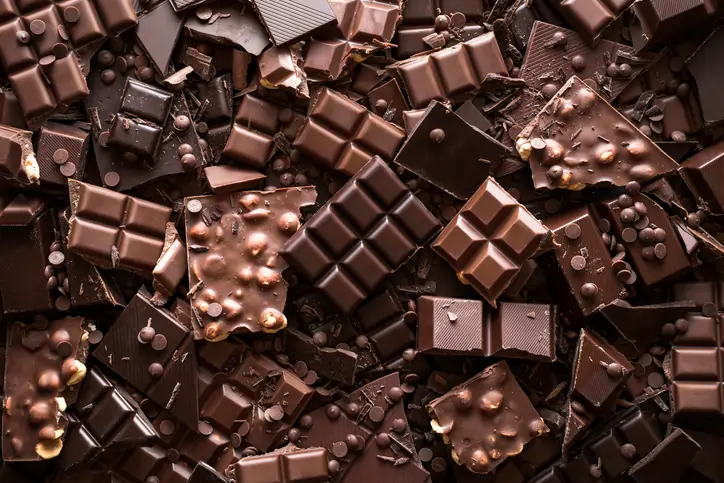
German chocolate brands
Introduction to German chocolate brands
Importance of German chocolate industry
The German chocolate industry holds a significant place in the global confectionery market, captivating the taste buds of chocolate enthusiasts worldwide. With a rich tradition and a commitment to quality, German chocolate brands have contributed immensely to the sweet legacy of the industry. The delightful fusion of craftsmanship, premium ingredients, and innovative flavors has set these brands apart.
Overview of renowned German chocolate brands
Renowned for their excellence, German chocolate brands have become synonymous with indulgence and superior taste. The likes of Lindt, Ritter Sport, Milka, Ferrero, and Hachez have etched their names onto the global chocolate canvas, each with its unique story, flavors, and contributions.
Historical background of German chocolate
Early origins of chocolate in Germany
The history of chocolate in Germany dates back centuries, with the sweet delight initially reserved for the elite. Introduced during the reign of Emperor Charles IV, chocolate quickly gained favor among the aristocracy. However, it was only in the 19th century that chocolate started becoming more accessible to the masses, paving the way for the establishment of iconic German chocolate brands.
Evolution of German chocolate craftsmanship
German chocolate craftsmanship evolved from small artisanal endeavors to large-scale production. The meticulous attention to detail and dedication to perfecting the art of chocolate-making has been a cornerstone of this evolution. From handcrafted creations to modern manufacturing techniques, German brands have seamlessly blended tradition with innovation.
Key characteristics of German chocolate brands
Emphasis on quality and craftsmanship
German chocolate brands have never compromised on quality. The commitment to delivering the finest products is deeply embedded in their ethos, resulting in chocolates that melt in your mouth, leaving an exquisite and lasting impression.
Utilization of premium ingredients
The cornerstone of German chocolate lies in the use of premium ingredients. The careful selection of high-quality cocoa, fine milk, and other components creates a symphony of flavors that tantalize the taste buds, ensuring an unparalleled experience.
Innovation in flavors and recipes
German chocolate brands continuously explore uncharted territories of flavor. From traditional classics to bold, experimental combinations, these brands push the boundaries of taste, crafting chocolates that cater to diverse palates.
Top German chocolate brands
Lindt
History and legacy
Lindt, a name synonymous with Swiss chocolate excellence, has deep German roots. Founded in Zurich but with strong connections to Germany, Lindt has redefined the chocolate experience for over a century.
Iconic products and flavors
Lindt’s Lindor truffles, with their irresistibly smooth centers, have become an international sensation. Their diverse array of flavors, including sea salt, hazelnut, and more, cater to various tastes.
Global presence and popularity
Lindt’s reach spans the globe, captivating chocolate lovers everywhere. Its dedication to craftsmanship and consistent quality has solidified its position as a leader in the industry.
Ritter sport
Unique square-shaped bars
Ritter Sport’s distinct square-shaped bars have not only captured attention but have also revolutionized convenience in chocolate consumption. Each small square offers a bite of pure delight.
Diverse range of flavors
From marzipan to yogurt, Ritter Sport boasts an eclectic range of flavors that highlight its innovative spirit and willingness to experiment.
Sustainability efforts
Ritter Sport goes beyond taste, championing sustainability through initiatives such as ethically sourced cocoa and environmentally conscious practices.
Milka
Alpine milk chocolate tradition
Milka’s legacy is rooted in its Alpine milk chocolate heritage, representing the pristine beauty of the Swiss Alps. This tradition lends a unique character to its chocolates.
Wholeness and smoothness of taste
Milka’s chocolates are characterized by their velvety texture and smooth flavor profile, making them a beloved treat for people of all ages.
Creative collaborations and packaging
Milka’s collaborations with various artists have resulted in eye-catching packaging that mirrors the creativity and sweetness within.
Ferrero (kinder)
German-Italian heritage
Ferrero, while Italian in origin, has found a home in Germany as well. This fusion of heritage is evident in the brand’s meticulous craftsmanship.
Kinder chocolate line
Ferrero’s Kinder line, with its kid-friendly portions and delicious taste, has won the hearts of children and adults alike.
Blend of milk and cocoa
The harmonious blend of milk and cocoa in Ferrero’s chocolates creates a balanced flavor profile that stands out.
Hachez
Small-batch production
Hachez takes pride in its small-batch production, allowing for an unparalleled level of attention to detail and quality control.
Premium dark chocolate
With a focus on dark chocolate, Hachez caters to connoisseurs who appreciate the rich, deep flavors that only quality dark chocolate can offer.
Artistic and elegant packaging
Hachez’s chocolates come wrapped in packaging that’s as much a work of art as the chocolates themselves, creating a feast for the eyes as well as the taste buds.
Innovation and trends in German chocolate
Incorporation of organic and locally sourced ingredients
German chocolate brands have embraced the call for sustainability by incorporating organic and locally sourced ingredients, ensuring a greener and more ethical approach to chocolate production.
Adventurous and fusion flavors
Staying true to their innovative spirit, German chocolate brands have embraced adventurous flavor combinations and fusions, surprising consumers with exciting new taste experiences.
Health-conscious and allergen-free options
Acknowledging the diverse dietary needs of consumers, German chocolate brands have started offering health-conscious and allergen-free options, ensuring that everyone can enjoy their delectable creations.
Impact of German chocolate brands on the global market
Influence on chocolate industry standards
German chocolate brands have set a high bar for quality, inspiring other players in the industry to prioritize excellence in craftsmanship and ingredients.
Export and international recognition
The popularity of German chocolate brands extends far beyond their borders, with exports contributing to the global recognition of the nation’s chocolate expertise.
Cultural representation through chocolate
German chocolate brands often infuse cultural elements into their products, offering consumers a taste of Germany’s traditions and heritage.
Challenges and future prospects
Sustainability and ethical sourcing concerns
As the world becomes more conscious of ethical practices, German chocolate brands face the challenge of maintaining sustainable sourcing while meeting growing demand.
Competition in the global chocolate market
The global chocolate market is highly competitive, prompting German brands to continuously innovate and stand out in a crowded landscape.
Prospects for continued innovation and growth
Despite challenges, the future looks promising for German chocolate brands as they leverage their heritage and expertise to drive innovation and growth.
German chocolate brands are defined by their commitment to quality, innovation, and craftsmanship, creating chocolates that delight and captivate. These brands have not only elevated the chocolate experience but have also contributed significantly to the rich heritage of chocolate-making. As German chocolate brands continue to push boundaries and embrace new trends, the world eagerly awaits the delectable surprises they have in store.


